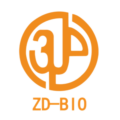In the semiconductor industry, which is constantly striving for technological breakthroughs and process optimizations, new materials and technologies are emerging continuously. Ethyl lactate is a rising star that is gradually attracting widespread attention due to its new applications in the semiconductor industry, bringing new opportunities for the upgrading of semiconductor manufacturing processes.
1. A Key Solvent for Anti-corrosion Liquid Wax
During the back-end processes of large-sized single-crystal silicon wafers, the grinding and polishing procedures are of crucial importance. The temporary bonding liquid wax used in these processes needs to have excellent anti-corrosion properties to ensure the flatness and stability of the wafers during processing. Ethyl lactate plays a key role here. As a low-polarity solvent, it has good solubility for the alkyl chains of tackifying resins. This enables the solid content of the tackifying resins in the liquid wax to be increased while maintaining a relatively low viscosity and good fluidity. Through this way, the anti-corrosion performance of the wax layer is significantly enhanced, laying a solid foundation for the improvement of wafer processing quality and efficiency.
2. An Assistant for Optimizing the Performance of Photoresists
As semiconductor technology develops towards higher precision and smaller manufacturing processes, the performance requirements for photoresists are becoming increasingly stringent. Ethyl lactate, as a solvent for photoresists, demonstrates unique advantages. It is not only a relatively environmentally friendly and low-toxic solvent but also can excellently dissolve the resin and other components in photoresists. When mixed with other additives, ethyl lactate shows good synergy, enabling photoresists to form uniform and stable solutions. This characteristic ensures the good coating performance and pattern transfer accuracy of photoresists in the lithography process, providing strong support for high-precision semiconductor manufacturing.
3. A Promoter for Anti-aging of Photoresists
Photoresists may have a small amount of residual acid when leaving the factory, which will lead to easy aging, reduced stability, and a shortened storage period. To solve this problem, the industry has started to add anti-aging agents to photoresists, and ethyl lactate has become an ideal solvent for these anti-aging agents. It can evenly disperse the anti-aging agents in the photoresist system, ensuring that the anti-aging agents can better play the role of reacting with the residual acid, thus effectively slowing down the aging process of photoresists and prolonging their storage period, reducing the risks of production costs and material waste.
4. An Efficient Cleaner for Plasma Etching Residues
The etching process in semiconductor manufacturing will leave plasma etching residues and other impurities on the surface of wafers. If these impurities are not removed in time, they will have a serious impact on subsequent processes. Thanks to its good dissolving ability, ethyl lactate can effectively dissolve oil stains, adhesives and other impurities, and there is no residue after drying, without causing any damage to the performance and reliability of electronic components. Therefore, it plays an important role in the cleaning process of semiconductor and microelectronics manufacturing, providing an efficient and reliable solution for cleaning the surface of wafers and ensuring the smooth progress of subsequent processes.
5. A Precise Solvent for Removing the Edge of Photoresist
After the lithography process is completed, the photoresist remaining on the edge of the wafer needs to be removed precisely, otherwise it will affect the quality and performance of the wafer. As a solvent component of the photoresist edge remover, ethyl lactate, in cooperation with other effective components, can efficiently remove the photoresist on the edge of the wafer without damaging other materials or structures on the surface of the wafer. This application ensures the integrity of the semiconductor manufacturing process and the high quality of products.
In conclusion, these new applications of ethyl lactate in the semiconductor industry have injected new vitality into the development of semiconductor manufacturing processes. With the continuous progress of technology and in-depth research, it is believed that ethyl lactate will play a more important role in the semiconductor field, helping the semiconductor industry reach a higher level, achieving more technological breakthroughs and innovative developments, meeting the growing market demands, and promoting the prosperity of the entire electronic information industry. We are looking forward to seeing ethyl lactate create more value and possibilities in the semiconductor industry and contribute more to global scientific and technological progress.
